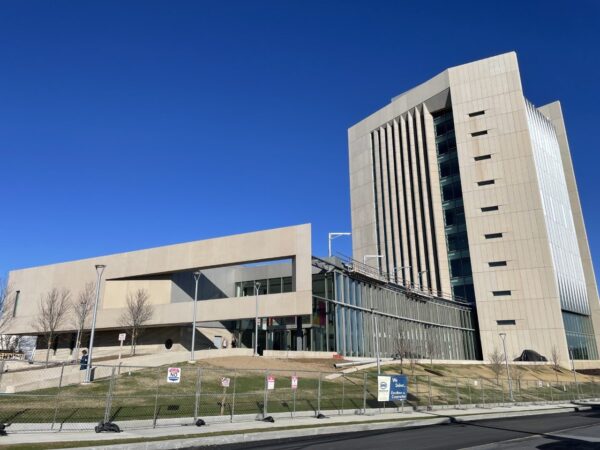

“There is no typical program controls assignment,” says Hill Program Controls Manager Anne Middlebrook. “But no matter what kind of program we support, our work always involves facilitating culture and collaboration, as much as it does program and project controls.” Once the team is on the same page culturally, Ms. Middlebrook suggests, it becomes natural to collaborate and tackle issues before they threaten projects, leading to better outcomes and more satisfied clients.
Ms. Middlebrook works with Hill International, Inc., a large project and construction management firm (PM/CM) often tasked with providing program and project controls for multi-billion-dollar, multi-year assignments. Currently, Ms. Middlebrook leads San Francisco International Airport’s (SFO) Capital Program Support Services (CPSS) engagement. The capital improvement program (CIP) represents a significant investment in SFO’s assets, with many capital projects planned in the coming decade and all happening as the airport industry prepares to rebound from the impact of COVID-19. Key drivers of the CIP include adjusting to the reality of the COVID-19 pandemic, accommodating long-term growth in passenger traffic and international flights, enhancing the passenger experience, and developing net-zero energy buildings to support SFO’s long-term goal of achieving an entire net-zero campus.
The work that Ms. Middlebrook and her team have done with SFO offers an example of how to cultivate collaboration on a program controls assignment and how to leverage that collaboration to overcome challenges and achieve better program results. Ms. Middlebrook points out that the ideal CIP delivery approach is based on two intertwined factors: the right mix of resources and an environment of partnership and open communication.
“Program controls happen, in a perfect world, organically—client-side personnel interacting closely, regularly, and harmoniously with contractors and designers, all making sure that projects are being planned and implemented according to the highest-possible standards. But that doesn’t always happen in real life, so it’s important for teams supporting capital programs to develop formal and demonstrably effective processes to monitor and track progress at both a macro and granular level. The backbone of these processes involves establishing an environment of partnership, facilitating communication, and finding the right mix of resources to get the job done.”
The physical, or, increasingly, virtual workspace is key to establishing the environment Ms. Middlebrook describes. The CPSS Team works, when present physically, in a new Consolidated Administrative Campus building on SFO property, which was completed as part of the CIP. Reflecting SFO’s collaborative culture, the 20-member CPSS Team and SFO Program Management were co-located in an open floorplan setting, keeping communication constant and open. Ms. Middlebrook called this workspace “a big key to our success at SFO.” She cited the continual engagement throughout the day with other SFO departments, such as program management or planning. This phase of the engagement allowed ideas to spread quickly, and the open floorplan leveled notions of hierarchy in the organization, strengthening partnerships and facilitating communication.
In the early months of 2020, however, the COVID-19 pandemic disrupted this highly effective work environment. As most of the office staff abruptly shifted to remote work, the SFO team had to rely on other tools for promoting partnerships and communication across the organization without sacrificing quality of service. Regular virtual meetings and a good deal of team commitment enabled the CPSS Team to quickly adapt to the new working conditions without missing a beat.
Another resource that SFO has been able to leverage to promote collaboration in the remote-working environment is their selected program controls technology, Unifier. This software, implemented pre-COVID, offers centralized data and real-time reporting for informed operational decision-making.
“It is very fortunate that SFO prioritized a collaborative software in their selection of a program management controls tool,” says Ms. Middlebrook. “The system has been especially helpful during the COVID-related disruptions, including remote working and reprioritizing of project scopes. Unifier provides a real-time tool that can be used by anyone on the management team to check in on project status at any time—during formal status meetings or more casual discussions, the information is always available.” Real-time workflows accommodate current data inputs to the system, thus equipping program leadership, project teams, and decision makers with current, up to the minute information through Unifier reporting outputs. This process keeps all project stakeholders on the same page and holds project teams accountable for reporting on the work that they perform.
Perhaps even more important than the software selection itself, Unifier was implemented across the organization in a way that aligned with SFO’s processes and values. This involved carefully engaging all end users and helping them understand the benefits provided by the software and how to use it. As part of the implementation, the Hill team developed and delivered a comprehensive, training program, helping to ensure the nearly 700 active Unifier license holders understand how and when to use the system.
Regarding Hill’s participation in the implementation of Unifier, Ms. Middlebrook says: “We acted as an enabling layer within the SFO CIP organization. We provided the tools to understand the systems, supported user adoption, and continue to verify data integrity from the project teams, who feed the system. When the pandemic hit, it was especially important for us to make sure that all end users understood how to participate in the information exchange facilitated by this software.
“Our professionals have backgrounds in program management, project controls, as well as varied business experience and training. With this diverse skill set, we can confidently step into a position like this one where the client needs us to understand their priorities as an organization, make those priorities our own, and then facilitate well-suited training programs accordingly. That is one of the key ways Hill adds value to a capital program.”
In 2018, the CPSS Team aimed at full user adoption of Unifier while the program ramped up to a peak monthly spend of $100 million to $150 million. Maintaining system performance and data integrity under those circumstances, was a challenge. Nevertheless, Ms. Middlebrook says that the implementation has been a success.
“As much as Hill brings to the equation, and as powerful a tool Unifier can be, a lot of credit is due to the client,” she says. “It is one thing to teach an organization the proper use of a software before a program really gets started, but typically these implementations are procured after the CIP has already started. When project team members embrace the use of Unifier to track commitments, progress, and spending during the daily challenges of a major CIP, it is a testament to the client’s culture toward the greater good of the program. Beyond SFO, success with any given program management controls tool happens when the whole organization gets behind the software and uses it as part of the daily work protocol. That habit, that culture is never an accident. It is cultivated like any other skill. What SFO has achieved is repeatable for other entities embarking on a CIP where partnership, communication, and transparency are priorities.”
To paraphrase Ms. Middlebrook, perfect program controls do not happen in real life and successful controls never come about on their own. CIP teams and clients must work hard to create the right environment for successful program controls. This includes identifying the right resources—the right consultant, the right workspace, the right program management controls tool. It is equally important that a culture of collaboration, partnership, and open communication be in place so that all stakeholders are empowered to work together to support the overall goals of the program. Clients and consultants alike need to embody and reciprocate this culture to facilitate the transmission of that culture throughout all of their work. In this way, an organization will be more prepared to handle the unique challenges of its CIP.
Share

April 11, 2024 | Articles
A Model Move: Managing Move-In at the Sylvia H. Rambo U.S. Courthouse

April 8, 2024 | Articles

April 4, 2024 | Articles
Driving Growth and Seizing Opportunity: Lukasz Marcinkiewicz Joins Hill as Country Manager, Poland

April 1, 2024 | Articles

March 27, 2024 | Articles
Building the Future: Women’s Leadership and Community Engagement in the Construction Industry

March 25, 2024 | Articles
Leveraging Data Analytics and Dashboards for Enhanced Project Performance

February 26, 2024 | Articles
Continuity, Creativity, and Collaboration: Delivering PennDOT’s Route 18 Signal Upgrade
We and use cookies and other tracking technologies to improve your experience on our website. We may store and/or access information on a device and process personal data, such as your IP address and browsing data, for personalised advertising and content, advertising and content measurement, audience research and services development. Additionally, we may utilize precise geolocation data and identification through device scanning.
Please note that your consent will be valid across all our subdomains. You can change or withdraw your consent at any time by clicking the “Consent Preferences” button at the bottom of your screen. We respect your choices and are committed to providing you with a transparent and secure browsing experience.
| Cookie | Duration | Description |
|---|---|---|
| cookielawinfo-checbox-analytics | 11 months | This cookie is set by GDPR Cookie Consent plugin. The cookie is used to store the user consent for the cookies in the category "Analytics". |
| cookielawinfo-checbox-functional | 11 months | The cookie is set by GDPR cookie consent to record the user consent for the cookies in the category "Functional". |
| cookielawinfo-checbox-others | 11 months | This cookie is set by GDPR Cookie Consent plugin. The cookie is used to store the user consent for the cookies in the category "Other. |
| cookielawinfo-checkbox-necessary | 11 months | This cookie is set by GDPR Cookie Consent plugin. The cookies is used to store the user consent for the cookies in the category "Necessary". |
| cookielawinfo-checkbox-performance | 11 months | This cookie is set by GDPR Cookie Consent plugin. The cookie is used to store the user consent for the cookies in the category "Performance". |
| viewed_cookie_policy | 11 months | The cookie is set by the GDPR Cookie Consent plugin and is used to store whether or not user has consented to the use of cookies. It does not store any personal data. |


